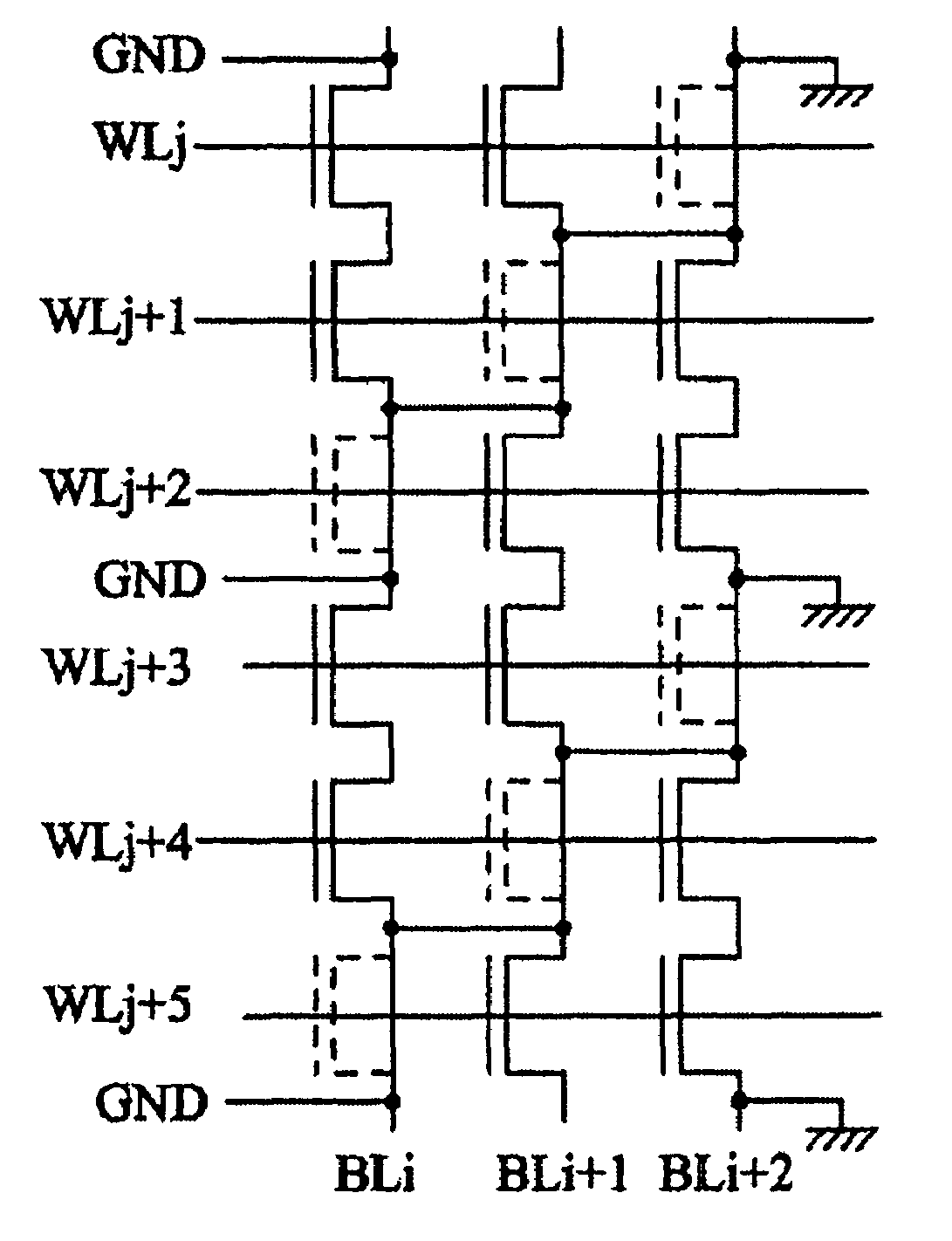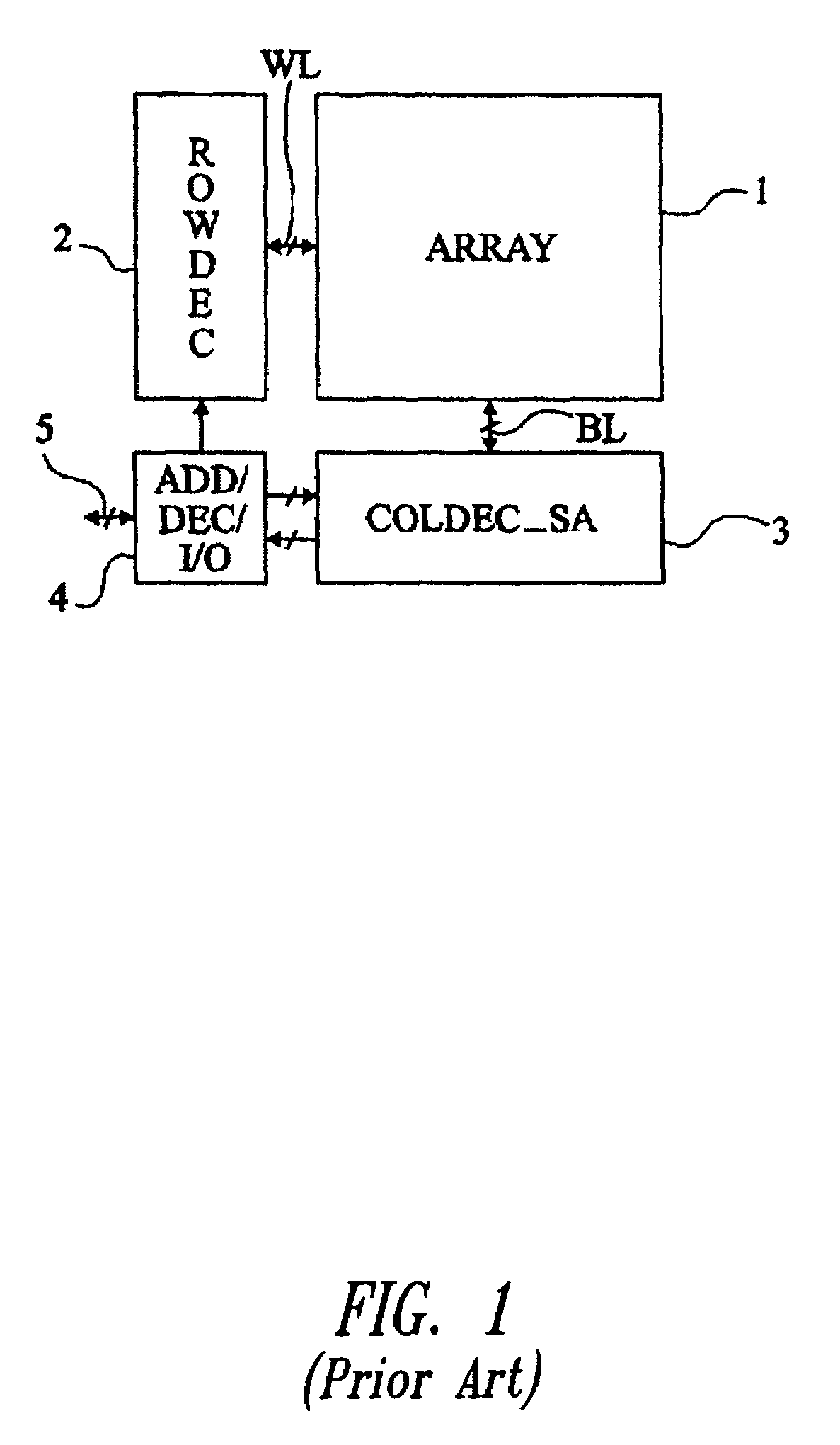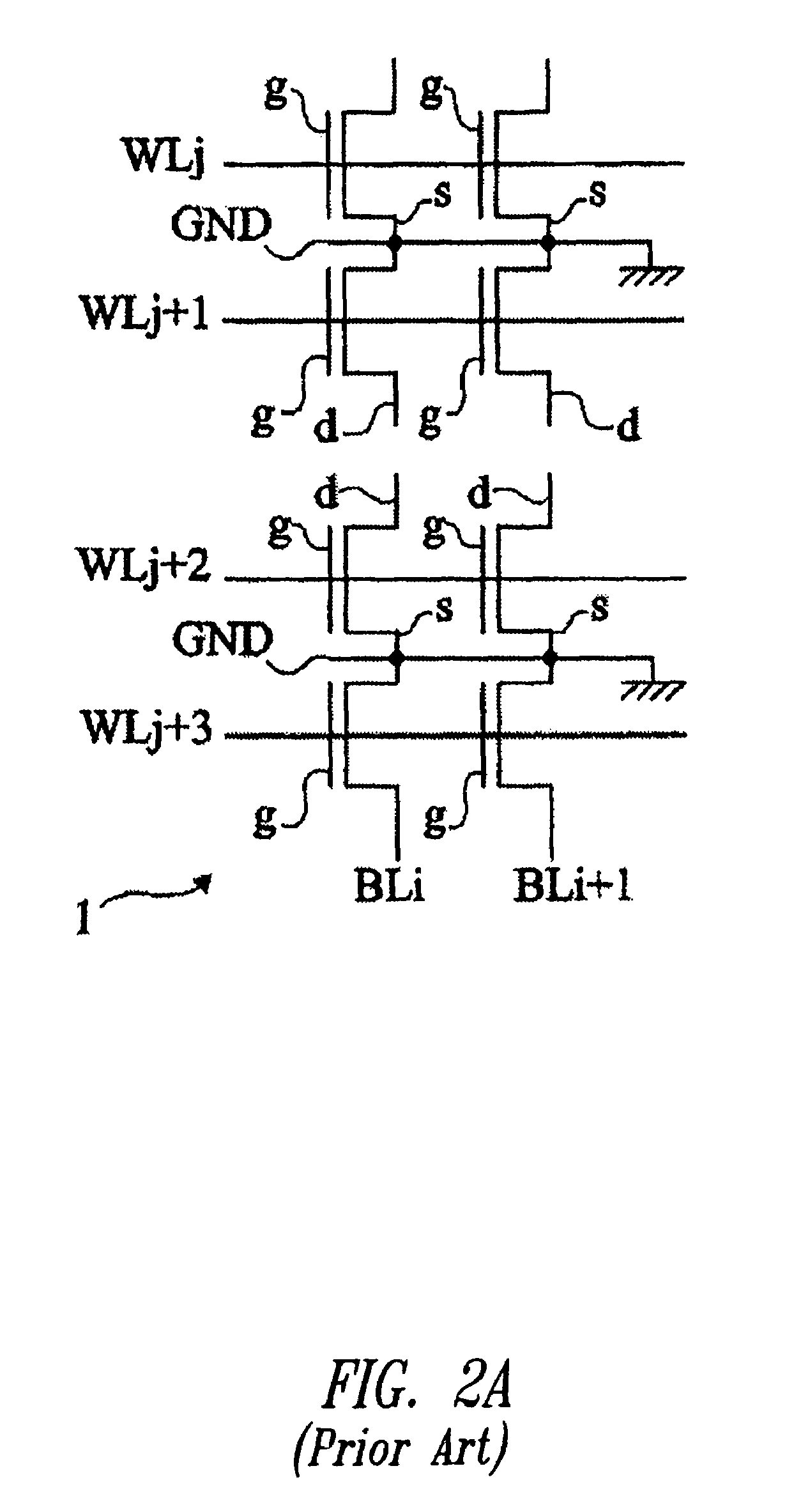Read-only memory
a read-only memory and memory cell technology, applied in the field of read-only memory, can solve the problems of increasing the bulk, coupling between neighboring bit lines in the array, and reducing the density of the structure, and achieve the effect of reducing the physical stress
- Summary
- Abstract
- Description
- Claims
- Application Information
AI Technical Summary
Benefits of technology
Problems solved by technology
Method used
Image
Examples
Embodiment Construction
[0035]Same elements have been designated with same reference numerals in the different drawings. For clarity, only those elements useful to the understanding of the present invention have been shown in the drawings and will be described hereafter. In particular, the circuits for reading and addressing the memory cells of an array according to the present invention have not been discussed.
[0036]FIGS. 4A and 4B very schematically show an embodiment of a ROM cell array according to the present invention. These drawings should be compared with previously-described FIGS. 2A and 2B, and respectively illustrate the equivalent electric diagram of the memory cell array and a simplified top view of the corresponding integrated circuit.
[0037]As previously, each cell is formed of a MOS transistor (for example, with an N channel) having its programmed or not state depending on the transfer of a contact from a drain or source region to a conductive line (bit line) to condition the discharge to gr...
PUM
 Login to View More
Login to View More Abstract
Description
Claims
Application Information
 Login to View More
Login to View More - R&D
- Intellectual Property
- Life Sciences
- Materials
- Tech Scout
- Unparalleled Data Quality
- Higher Quality Content
- 60% Fewer Hallucinations
Browse by: Latest US Patents, China's latest patents, Technical Efficacy Thesaurus, Application Domain, Technology Topic, Popular Technical Reports.
© 2025 PatSnap. All rights reserved.Legal|Privacy policy|Modern Slavery Act Transparency Statement|Sitemap|About US| Contact US: help@patsnap.com



